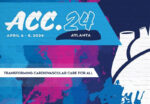Nowadays, evidence from studies and meta-analyses has demonstrated the benefits of complete revascularization compared to culprit-vessel-only revascularization in patients with acute myocardial infarction (AMI). The identification and treatment of non-culprit lesions can be guided by conventional angiography, intracoronary imaging, or coronary physiology; the optimal modality, however, is still unclear. Quantitative flow ratio (QFR) is a...
ACC 2024 | DanGer-Shock Trial
Cardiogenic shock will develop in approximately 10% of patients with ST elevated acute MI (STEMI), and unfortunately, only half of these patients will survive. Researchers have been looking into the Impella system to manage this severe complication. It consists of an aortic transvalvular pump designed to deliver blood from the left ventricle into the systemic...
Interventional Cardiology: The Most Read Articles of 2023
Discover the most read scientific articles on interventional cardiology of 2022 in our website. No Reflow after Primary PCI in STEMI: An Angiographic Analysis of the TOTAL Study In the early days of percutaneous coronary intervention (PCI) in patients with ST elevation acute myocardial infarction (STEMI), no reflow phenomenon was known as an indicator of...
Is Complete Revascularization Really Necessary after AMI in the Elderly?
The population over 75 is growing gradually, which entails an increase in acute myocardial infarction (AMI) in this group. As we all know, it is fairly common for AMI to present with multivessel disease. It has been shown that younger patients will benefit from complete revascularization vs. a simple resolution of the culprit vessel. However,...
TAVI-in-TAVI with Balloon-Expandable Valves
TAVI (Transcatheter Aortic Valve Implantation) has proven to be beneficial and is currently performed in increasingly younger and lower-risk patients. However, as with surgical bioprostheses, structural deterioration, whether due to stenosis or regurgitation, is one of the challenges we must address. While currently uncommon, this is an issue we will probably see more and more...
ACC 2023 | PULSE-AF
Catheter ablation is an effective treatment for patients with atrial fibrillation (AF) refractory to the standard medical treatment. Verma et al. conducted a global, prospective, multicenter, nonrandomized study in which patients were operated with the PulseSelect system—pulmonary vein isolation using a nonthermal ablation system—and followed-up at 12 months. The system consists in nonthermal ablation, discharging...
FRAME-AMI: FFR vs. Angiography of Non-Culprit Vessel in ACS
This study compared fractional flow reserve (FFR) vs. angiography to guide the angioplasty of non-culprit vessels in patients with acute coronary syndrome (ACS) and multivessel disease. Landmark studies such as COMPLETE, COMPARE-ACUTE and DANAMI-3-PRIMULTI have demonstrated the prognostic value of revascularization (after treatment of the artery responsible for the ACS) of non-culprit arteries with respect...
Hybrid Coronary Revascularization: A Valid Option?
In this article, we will examine the use of hybrid coronary revascularization to treat multivessel coronary artery disease. Coronary artery disease (CAD) is the most common cause of morbidity and mortality in the western world. The presence of multivessel CAD is associated to high short and midterm mortality and coronary artery bypass graft (CABG) is...
P2Y12 Inhibitor Monotherapy vs Aspirin: Results of a Network Meta-Analysis
Revascularization and antiaggregation guidelines have typically recommended aspirin (AAS) as first choice for secondary prevention of cardiovascular events after DES stenting. However, these past few years this strategy has been called into question, seeing as studies have shown the superiority of P2Y12 inhibitor monotherapy (IP2Y12) with clopidogrel or ticagrelor. There is little data comparing both...
Devices to Prepare Severely Calcified Lesions: Is There a Difference When Assessed by Intravascular Imaging?
Severely calcified coronary lesions are found in 25% of patients undergoing PCI, and their presence has a negative impact in long term outcomes. These lesions difficult stent expansion and increase device failure rate, even when using the latest generation of drug eluting stents (DES). This is why there is an interest in lesion preparation strategies...








